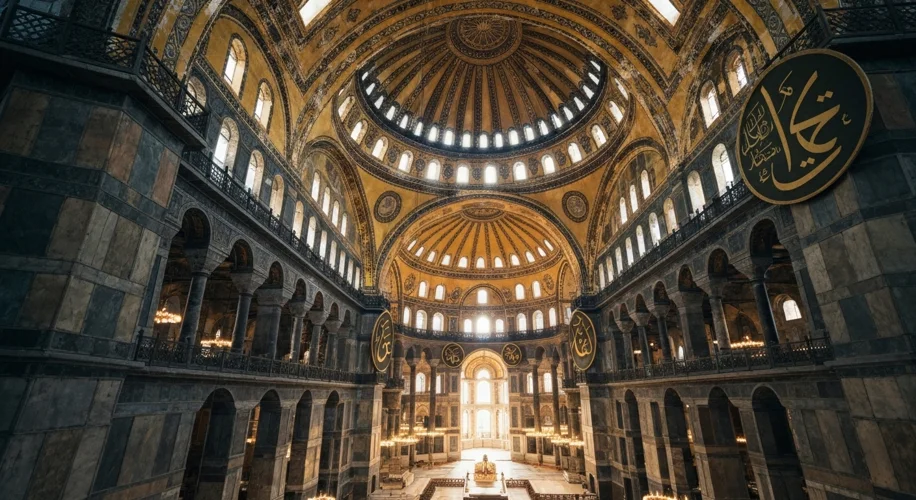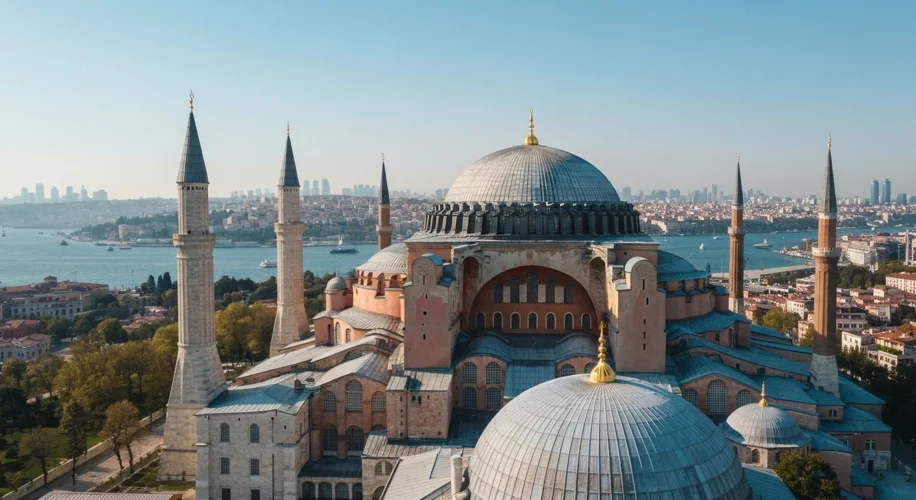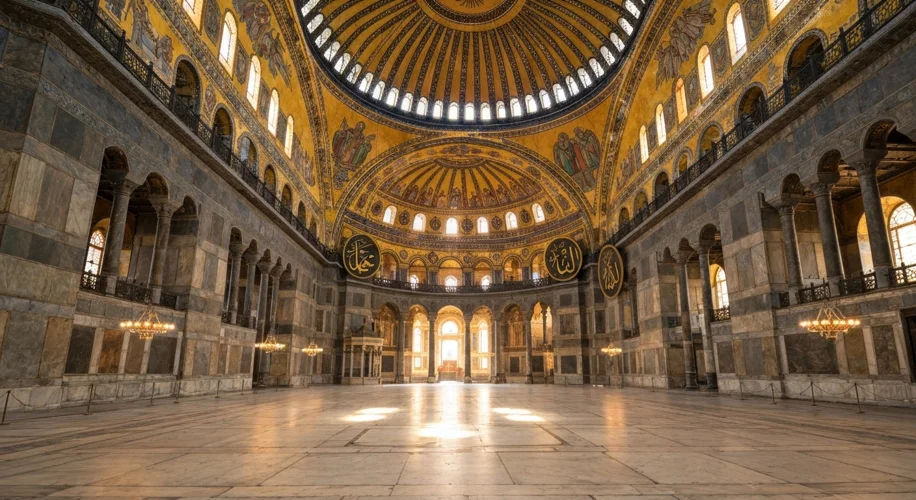Imagine standing in a vast, echoing space, the air thick with the scent of incense and the weight of centuries. Sunlight, filtered through hundreds of windows, illuminates a dome so immense it seems to defy gravity itself. This is the Hagia Sophia, a structure that has witnessed empires rise and fall, a building that has been a beacon of faith and a symbol of power for over 1,500 years.
Our story begins in the heart of the Byzantine Empire, a realm that stretched across vast territories and preserved the legacy of Rome. The year is 537 AD. Emperor Justinian I, a man of immense ambition and vision, has just inaugurated a new cathedral, a masterpiece that would outshine all that came before it. This wasn’t just any church; it was the Hagia Sophia, the “Holy Wisdom,” destined to be the spiritual center of the Eastern Orthodox world.

Justinian’s reign was a period of great revival for the Byzantine Empire, a time when art, law, and architecture flourished. But the previous Hagia Sophia had been destroyed in riots, leaving a void that the ambitious emperor was determined to fill with something truly unprecedented. He commissioned two brilliant architects, Isidore of Miletus and Anthemius of Tralles, men who were not builders by trade but esteemed mathematicians and physicists. Their task: to create a church unlike any other, a testament to the glory of God and the might of the Emperor.
The construction itself was a Herculean effort. Thousands of laborers toiled for five years, utilizing materials sourced from across the empire – marble from Egypt, porphyry from ancient quarries, and columns from the Temple of Artemis at Ephesus. The sheer scale and innovative design were breathtaking. The architects grappled with the challenge of supporting a massive circular dome on a square base, a feat that required revolutionary engineering techniques, including the use of pendentives – spherical triangles that elegantly transition the weight of the dome to the supporting piers.
The result was a space that overwhelmed the senses. The dome, seemingly floating above, was adorned with gold mosaics that shimmered, depicting Christ Pantocrator, the Virgin Mary, and a host of saints and angels. The vast interior was bathed in light from 40 windows at the base of the dome, creating an ethereal, otherworldly atmosphere. When it was completed, Procopius, a historian of the time, wrote that “it seemed as if the dome had been suspended from heaven by a golden chain.”
For nearly a thousand years, the Hagia Sophia served as the patriarchal cathedral of Constantinople, the vibrant capital of the Byzantine Empire. It was the stage for imperial coronations, religious ceremonies, and pivotal moments in history. Emperors were crowned here, councils were held, and the faithful gathered to worship.
But history is a restless tide. In 1453, after a grueling siege, the Ottoman Turks conquered Constantinople, marking the end of the Byzantine Empire. Sultan Mehmed II, the conqueror, rode into the city and, upon seeing the magnificent structure, immediately ordered it to be converted into a mosque. The Christian symbols were largely covered or removed, minarets were added to its exterior, and the Hagia Sophia began its second act.

For almost 500 years, it stood as one of the most important mosques in the Ottoman Empire. Islamic calligraphy, grand mihrabs, and minbars replaced the Christian iconography. Yet, beneath the layers of Islamic art, the original Byzantine grandeur remained, a silent testament to its past.
In the 20th century, a new chapter began. In 1934, Mustafa Kemal Atatürk, the founder of the Republic of Turkey, decreed that the Hagia Sophia should be secularized and transformed into a museum. This decision aimed to bridge the gap between Turkey’s diverse historical and cultural heritage, allowing people of all faiths to appreciate its architectural brilliance and historical significance.
Today, as we stand in 2025, the Hagia Sophia continues to captivate. It has been a basilica, a mosque, and a museum. Its walls have absorbed the prayers of Christians, the calls to prayer of Muslims, and the hushed awe of countless visitors. It stands not just as a building, but as a symbol of cultural exchange, religious evolution, and the enduring power of human ingenuity.
What does the Hagia Sophia truly represent? Is it a monument to Christianity, Islam, or to the sheer audacity of human creation? Perhaps its enduring legacy lies in its very adaptability, its ability to transform and yet retain its soul. It is a place where the echoes of Byzantium and the Ottoman Empire intertwine, a physical manifestation of the complex tapestry of history that has shaped our world. Its story is far from over; it continues to be written with every visitor who walks through its magnificent doors, a silent witness to the ever-unfolding narrative of humanity.

